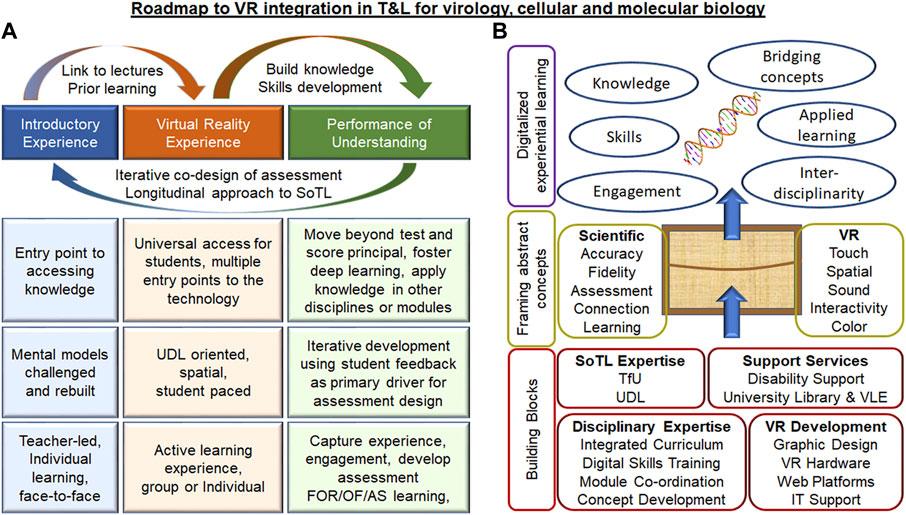Breaking Barriers: Overcoming Challenges in Integrating VR/AR into Educational Curricula
Integrating Virtual Reality (VR) and Augmented Reality (AR) into educational curricula is revolutionizing the classroom experience. By making learning more immersive, interactive, and engaging, these technologies promise profound educational outcomes. Though, the journey toward widespread adoption is not without its difficulties.In this guide, we delve into both the challenges and solutions for integrating VR/AR in education, highlight their benefits, share real-world case studies, and offer practical, actionable tips for educators.
The Promise: Benefits of VR and AR in Education
Before addressing the hurdles, it is essential to understand why investing in VR/AR educational technology is worthwhile.Here are key benefits:
- Enhanced Engagement: Immersive lessons hold students’ attention and foster deeper learning.
- Experiential Learning: Students can explore complex subjects—like the solar system or historical events—in an interactive 3D environment.
- Accessibility: VR/AR tools can simulate real-world scenarios for remote learners or those with physical disabilities.
- Collaboration: Collaborative AR/VR experiences build teamwork and problem-solving skills.
- Safer Experimentation: Virtual labs enable risk-free scientific experimentation and exploration.
Key Challenges in Integrating VR/AR into Educational Curricula
Despite its transformative potential, the integration of VR and AR in classrooms comes with notable obstacles. some of the most common include:
- High Costs: The hardware and software required for immersive technology can be expensive, especially for underfunded schools.
- Technical Infrastructure: Reliable internet, compatible devices, and adequate IT support are prerequisites for seamless integration.
- Lack of Content: There is a shortage of high-quality, curriculum-aligned VR/AR educational resources tailored to various subjects and grade levels.
- teacher Readiness: Teachers may lack experience with VR/AR tools, leading to uncertainty and reluctance in using them effectively.
- Student Accessibility: Not all students have equal access to VR/AR devices, raising concerns about inclusivity.
- Data Privacy and Safety: VR and AR platforms may collect sensitive student data, creating privacy and cybersecurity challenges.
Overcoming the Barriers: Practical Solutions and Strategies
To harness the full potential of VR and AR in schools, educators and administrators can implement the following strategies:
1.Leverage Grant Funding and Partnerships
- Apply for technology grants offered by educational foundations, government agencies, and tech companies.
- Partner with local businesses, universities, or edtech startups to gain access to devices and expertise.
2. Start Small & Scale Gradually
- Implement pilot programs in select classrooms to refine your approach before full deployment.
- Use low-cost solutions like Google Cardboard or AR-enabled tablets to test content and student response.
3. Foster Teacher Professional Development
- Provide hands-on training sessions, webinars, and online resources to improve teacher confidence with VR/AR tools.
- Encourage a professional learning community where teachers can share best practices and troubleshoot together.
4. Focus on Accessible and Inclusive design
- Choose VR/AR apps that adhere to accessibility standards and work across multiple devices.
- Offer choice activities or share devices to ensure all students can participate.
5. Prioritize Privacy and Security
- When selecting platforms, investigate their data collection practices and compliance with privacy laws like FERPA or GDPR.
- Educate students about digital privacy and implement robust cybersecurity protocols.
Case Studies: Real-World Request of VR/AR in Education
A public high school in Texas introduced a VR chemistry lab, enabling students to safely conduct complex experiments. Initially supported by a state grant, the program reported a 40% increase in student engagement and a measurable improvement in test scores. Teachers credited ongoing training and collaborative lesson planning for the project’s success.
A Wisconsin elementary school piloted an AR storytelling app, allowing students to bring their creative writing to life with animated characters and interactive scenes. The project, funded through a community partnership, improved reading and writing skills, especially for reluctant readers, and fostered enthusiasm for learning.
A consortium of rural schools across Canada used VR headsets to take students on digital field trips to world museums, historical landmarks, and even the International Space Station. The immersive experiences expanded students’ worldviews and provided opportunities that were or else unattainable due to geographic isolation.
First-Hand Experience: A Teacher’s Outlook on VR/AR Integration
“Initially, I was hesitant to introduce VR into my middle school science class due to unfamiliarity with the technology. However, after participating in a workshop and collaborating with my colleagues, I found the tools not only manageable but transformative. My students became more curious, asked deeper questions, and regularly collaborated—VR lessons turned abstract concepts into exciting realities.”
— Emily Frost, Science Teacher, California
Practical Tips for Educators Embracing VR/AR
- Choose Age-Appropriate Content: Ensure VR/AR lessons are suited to your students’ developmental stages and learning needs.
- Blend with Traditional Methods: Combine VR/AR experiences with hands-on activities, discussions, and written assignments.
- Evaluate and Iterate: Gather feedback from students and colleagues to refine and improve the integration process.
- Promote Digital Citizenship: Teach students about responsible use and potential risks of immersive technologies.
- Document Outcomes: Track changes in engagement and performance to justify continued investment and share success stories.
The Future of Immersive Technology in Education
With advancements in affordable hardware, content libraries, and teacher training, the barriers to VR and AR adoption are gradually falling. Widespread integration will depend on ongoing collaboration between educators, technologists, and policymakers. As more schools demonstrate accomplished models, the classroom of the future—powered by VR/AR—moves closer to reality.
Conclusion: Turning Challenges into Opportunities
Integrating VR/AR into educational curricula requires more than enthusiasm for cutting-edge technology; it demands thoughtful planning, resourcefulness, and a commitment to equity. By recognizing challenges and systematically addressing them—with support from the wider school community—educators can create deeply enriching and engaging learning environments. As these technologies continue to evolve, so too will the possibilities for innovative teaching, dynamic curricula, and empowered learning.
Ready to break barriers in your classroom? start small, keep learning, and watch as VR and AR transform education—one student at a time.

